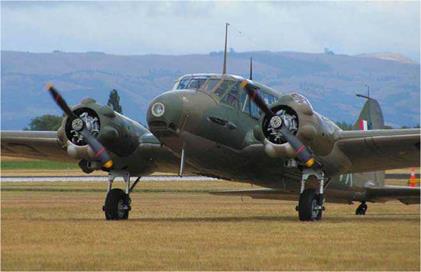Fixed-pitch Propellers
It has been assumed up to now, the propeller to be of the fixed-pitch type, as found on low performance aircraft. The advantages of the fixed-pitch prop are its simplicity of operation for low time pilots, it is the cheapest type to install on an aircraft and it is relatively maintenance free due to the absence of a constant-speed unit (CSU). Its disadvantage is it gives its maximum efficiency at only one air speed, known as the ‘design air speed’. At any other speed, above or below the design air speed, the prop efficiency will be reduced. However, in general, a prop will normally be chosen from a family of props to suit the aircraft’s design air speed. In order to produce the maximum amount of thrust for the least amount of drag or torque, each blade element is set to a different angle to ensure the optimum angle of attack is maintained at the prop’s speed ratio to produce its maximum efficiency. This is the reason why the prop blade is twisted. If the blades were not twisted, the blade root would be operating at a negative angle of attack
while the prop tip would be stalled when operating at the design speed ratio.
At the design air speed, maximum efficiency also depends on the geometric pitch. A prop with a relatively short geometric pitch will give the aircraft a better rate of climb over a prop with a longer geometric pitch. The short pitch prop is more suitable for a training aircraft or aerobatic aircraft which spend a relatively greater proportion of their flying time at lower air speeds, doing training manoeuvre and climbing to altitude. Conversely, a longer pitch prop produces a slightly higher cruising speed, favouring an aircraft used for crosscountry flying. Longer pitch props may not attain full RPM at the start of the take-off roll, due to the blade’s high angle of attack causing too much blade drag. However, if the pitch is too fine, the RPM will reach a maximum with the aircraft stationary or early in the take-off run. On reaching cruising speed the engine RPM would exceed its limit, calling for a reduction in engine power. The American FAA certification rules require the propeller pitch to be such that it prevents the engine from over-speeding at maximum RPM, while climbing at the ‘best rate of climb speed’. Likewise, the engine’s RPM is not allowed to be exceeded by more than 10% in a dive at the never exceed speed (VNE) with the throttle closed. The same rules apply to constant-speed propellers.
It is now obvious, selecting a propeller with the desired pitch is very important. Propeller manufacturers list a selection (or family) of props designed for certain engines to aid the aircraft designer in his/her choice of propellers. There can be found on the prop hub a set of numbers such as 72" x 57". The first number refers to the diameter of the prop in inches, while the second number refers to the geometric pitch in inches at the ‘standard radius’.
When flying a plane with a fixed pitch prop in conditions of turbulence, you may notice some rapid variation in RPM. This could be very disconcerting, inducing you to suspect
|
This beautifully restored Avro Anson Mark 1, of WW II vintage has fixed-pitch, two-blade, wooden propellers powered by two Armstrong Cheetah IX seven-cylinder radial engines of 350 BHP each. |
engine trouble. The cause of the engine RPM variations can be attributed to the propeller loading and un-loading. As the aircraft attitude is constantly changing in the turbulence, the air flow through the prop disc will meet the blades at varying angles of attack causing variations in prop loading and hence a change in thrust and RPM. The throttle should be set to maintain the required RPM for turbulence penetration air speed (Vb) and be left there. The RPM will fluctuate around the desired setting, so do not chase it with the throttle; set it and forget it!












